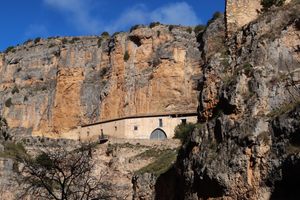About
In 1907, Lino Bueno had a job to do. At first it seemed simple enough: excavate some of the soft, rich limestone from the nearby hillsides to create municipal buildings for the city he lived in. But before long, Lino realized that he was inadvertently building something much more interesting – an everlasting home for him and his family.
The Spanish town where Lino lived, Alcolea Del Pinar, was like any other. People worked, people played, people raised their families. The story was usually the same: one worked hard to make a living, and used the material fruits of their labor to build a home and start a family. The Bueno family just happened to live out this time-honored tale in a much more literal way.
Eight years after Lino originally began to excavate the stone, a notion hit him. The large shelf he was carving into the rock could easily double as a shelter – perhaps even his own family. The walls were sturdy and obviously built to last, and the space was more than enough to accommodate a family at that time. And it made sense that a home made of stone would outlast any other home he would purchase or build.
So it wasn't long before the family tested his theory and moved into the shelter. And then never left.
Through the years, Lino kept carving, creating fixtures the hard way with a pick and chisel, decorating the space with a fireplace, seating, shelves, cabinets, stairs, balconies, and more finely finished walls and ceilings – all with his own bare hands. It wasn't until 1929 that he felt he could call his work finished.
Not coincidentally, that was also the year in which he was given a merit badge by the Ministry of Labour, and had the chance to meet King Alfonso XII, accompanied by Queen Victoria Eugenia, the Prime Minister Primo de Rivera and other high officials of the state. And that was only the beginning of what would be the house's storied history. During the Spanish Civil War, the stone house served as a refuge for local villagers, and has since been a odd and popular destination for curious travelers, from lowly tourists to powerful heads of state.
Related Tags
Published
May 22, 2012






















